Welcome to an exclusive interview with Doug Rogers, founder of EastWest, purveyors of some of the finest sample libraries and sample based virtual instruments of recent times.
Mindful of the upcoming release of the recently announced PLAY, EastWest's new 64-bit Advanced Sample Engine, and the first six virtual instruments to utilize this new engine, Chris Halaby, CEO of Muse Research, had an intimate chat with Doug...
~~~
First off, a little history about EastWest would be great. How did you guys get into the sampling business, and what exactly was your start?
EastWest was founded in 1988. Previously I had worked as a recording engineer and producer in New Zealand and Australia with local bands, the most well known internationally being Split Enz. In the early/mid 80s the primary samplers were the Akai S1000 and Emulator 3. They were the first affordable samplers with CD quality and that made them really usable in professional studios. Producers at the time were using “sample reels” to collect source material (individual sounds from various sessions) which were then used with the Akai/ E-mu for drum replacement etc, so I took a bunch of recordings I had done and created my own sample reel. The realization for me came when I was working with a band called The Fan Club. We mixed the record in Los Angeles and I had forgotten to bring my sample reel, so I went looking for some commercial drum sample libraries and discovered that there weren't any! I decided that this was a great opportunity.
My entry into the sampling business started by placing an ad in The Recycler newspaper in Los Angeles … and people just started calling! My initial strategy was to find some well-known people and put together libraries of their sounds with a focus on drum libraries. I did some research by listening to the great drum sounds I heard on records I liked, and made a list of the recording engineers involved. Bob Clearmountain was an obvious choice, and he became the first to get involved in 1989. I released an audio CD of samples in 1989 called Bob Clearmountain Drums. The Bob Clearmountain Drum CD went on to become one of the biggest selling sample CDs ever and put EastWest on the map.
What do you consider your first “big break”? When did you know that EastWest was going to be a force to be reckoned with in the music industry?
The release of the Bob Clearmountain CD made it clear that there was a hungry market to be serviced. I began connecting with others in the technology side of the music business, and the business grew as the network grew. We signed a deal to become the exclusive distributor for Zero-G (They had loop libraries starting in 1990 - a new phenomena at the time) and Best Service (The first European developer). These companies took on distribution of our products in their respective markets as well as increasing our reach. That partnership remains even today.
How would you summarize the changes to our industry that have occurred since then? Obviously, the computer has become a dominant creative force in the studio, but a lot of other things have changed, and your early platforms (Akai, E-MU, Kurzweil) have all but gone away… How have users expectations changed as a result of their changeover to software?
Software has become so much more important in music making today. At the time EastWest was founded, computer processors weren't fast enough to do any serious music work besides MIDI, and that's why companies like Akai and E-mu were able to provide solutions based on their own custom chip technologies. I recall purchasing a 4 meg ram expansion for my Emulator 3 in those days for $1000! Remember, around this time high-end artists/producers were spending $100-350,000 on Fairlights and Synclaviers.
Today users are demanding so much more in terms of playability and programmability. In the early days they were happy with using raw samples off audio CDs, and programming their own sounds. Now our customers want all the work done for them and that's where the software engine is particularly important today.
When did you first start coupling your content to a sample-playback engine? Why did you do it? Was it primarily because of IP protection issues? Is there a market for “naked” samples anymore or are they so prone to theft that there's no point in developing them?
We never intended to be a software company, so initially we signed an OEM licensing deal with another company to license their sample player. As time went by we got to the point of wanting features that weren't available in the more generic playback engines so I decided we needed to develop our own solution.
As a result of making that difficult decision we have ended up with a product that allows us to add features as required. Our new sample engine was designed from the ground up by musicians, and we've streamlined the interface to emphasize ease-of-use without having to give up any power. Our new libraries will be more expressive because of our ability to control the multitude of parameters more closely. Furthermore, our new PLAY instruments that include the new engine will be the first 64-bit virtual instruments on the market, so we will be able to access more RAM than our competitors, which had been a bottleneck in the past with other engines. After all, people just want to sit down and make music, they don't want to have to make compromises for the limitations of their software.
How did you get involved in marrying your sample content to a sample playback engine? What caused you to decide to develop your own engine?
The NI Kompakt player was recently discontinued and therefore was not upgraded to be Intel Mac compatible. PLAY is our solution for these users, or they can use Kontakt 2.2, or use a Receptor!
What is your philosophy about copy protection?
Security is a fact of life. We saw an enormous increase in sales since our first challenge and response system was put in place. On our new sample engine, we chose the iLok copy protection system because it is the most used security system out there with well over 100,000 registered users. One iLok key will hold up to 100 registrations and the system is completely portable between computers. It also allows us to provide trial versions of our products, which our customers will really benefit from, as they will get to audition the entire product before making a purchase decision.
What goes into making a new library? How long does it take, and how much does it cost? How do you decide what to do? Tell us about the new libraries…
It's a lot of meticulous work, like watching paint dry sometimes. We are releasing six new libraries in April and May. They are brand new collections, and are really diverse. My partner Nick Phoenix has a great feel for the holes in the film/tv composing market because he is a composer himself of over 600 film trailers. They are definitely expensive to create – we're approaching $1 million in investment in the new stuff. My new Fab Four Virtual Instrument is a personal labor of love for me, having been a Beatles fan for my entire life. We re-created all the classic Beatle sounds, using the same kind of recording techniques and equipment gathered from around the world, and created a Virtual Instrument of those sounds. Ken Scott (The engineer on The Beatles' The White Album and Magical Mystery Tour) came here and worked with me on the recordings. Much of the time was spent finding exactly the right equipment before we recorded a single sound because we wanted to get it right and be as close as possible to the original.
Some shots from the Fab Four sessions
Tell us about your own studio facility in Hollywood, if you will, since there is a fascinating history to the building. What made you decide to purchase your own facility?
Some of the "musical royalty" who have worked at EastWest Studios during the past 45 years (in alphabetical order):Christina Aguilera, Herb Albert, America, Paul Anka, Fiona Apple, Audioslave, Frankie Avalon, Barenaked Ladies, Better Than Ezra, Blondie, Buffalo Springfield, Burt Bacharach, Beach Boys, Blink 182, Glen Campbell, Canned Heat, Vickie Carr, Carpenters, Johnny Cash, David Cassidy, Ray Charles, Chicago, Ry Cooder, Elvis Costello, Count Basie & Orchestra, Eric Clapton, Nat King Cole, Natalie Cole, Ornette Coleman, Duane Eddy, Jan & Dean, John Coltrane, Petula Clark, Joe Cocker, Sam Cooke, Bing Crosby, Bobby Darin, Sammy Davis Jnr, Jackie DeShannon, Duke Ellington, Neil Diamond, Fifth Dimension, Bob Dylan, Ella Fitzgerald, Benny Goodman Big Band, Grateful Dead, Grass Roots, Green Day, Guess Who, Lani Hall, Herbie Hancock, Hawaii Five-O theme, Don Ho, Whitney Houston, Howlin' Wolf, Janis Ian, Ike & Tina Turner, Incubus, Isley Brothers, Michael Jackson, Elton John, Stan Keaton, Carole King, Kris Kristofferson, Franky Laine, K.D. Lang, Avril Laverne, Godfather Theme, Michel LeGrand, Peggy Lee, Little Feat, Trini Lopez, Madonna, Mamas & the Papas, Dean Martin, MASH theme, Johnny Mathis, Meatloaf, Sergio Mendez & Brazil 66, Metallica, Johnny Mercer, Paul McCartney, Barry Manilow, Scott McKenzie, Natalie Merchant, Bette Midler, Mission Impossible theme, Monkees, Alanis Morrissette, Motley Crue, Muse, Rick Nelson, Willie Nelson, Wayne Newton, Harry Nilsson, Nitty Gritty Dirt Band, Ozzy Osborne, Partridge Family, Paul Revere and the Raiders, Tom Petty and the Heartbreakers, Iggy Pop, Elvis Presley, Lisa Marie Presley, Billy Preston, Bonnie Raitt, Helen Reddy, R.E.M., Nelson Riddle, Righteous Brothers, Johnny Rivers, Santana, Jimmy Smith, Sonny & Cher, Phil Spector, Rage Against the Machine, Red Hot Chilli Peppers, Kenny Rogers, Rolling Stones, Ronnie & the Ronettes, Tom Scott, Carly Simon, Frank Sinatra, Nancy Sinatra, Pointer Sisters, Bruce Springsteen, Steppenwolf, Rod Stewart, Mathew Sweet, Ronnie & the Ronnettes, Dianna Ross, Stone Temple Pilots, Barbra Streisand, System of a Down, Temptations, The Animals, The Association, The Four Tops, The Go-Gos, The Kingston Trio, The O'Jays, The Vines, Mel Torme, Richie Valens, The Who, Stevie Wonder, Tool, Turtles, Sarah Vaughn, Jimmy Webb, Weezer, Andy Williams, Nancy Wilson, Frank Zappa...
Basically our new studios came on the market the year before last. The previous owners had gone into bankruptcy. As everyone knows, it takes a special set of skills to make a commercial recording studio profitable these days, and it is an incredibly competitive business. One of the ways to keep a venerable institution like this going is to use it to develop content for our Virtual Instruments and that is what we have been doing with it. All of the new instruments were recorded here.
The studio was built in the 60's by the legendary Bill Putnam, with funding from Bing Crosby and Frank Sinatra, who started Reprise records here and recorded many hits in Studio 1, which is large enough to hold a 70 piece orchestra, including “Strangers In The Night”.
In the beginning artists like Bing Crosby, Frank Sinatra, Dean Martin, Sammy Davis, Nat King Cole, Johnny Mercer and Ray Charles were recording the hits of the day, and the legendary Beach Boys "Pet Sounds" album was recorded here also. The Mamas and Papas "California Dreamin", "Monday Monday", and Scott McKenzie's "San Francisco" were recorded here.
Elvis Presley recorded his 1968 Christmas special in Studio 1. Famous themes for film and television were recorded here including the MASH theme, Mission Impossible, Hawaii Five-O, Beverly Hillbillies, The Godfather, plus much of the Monkees and Partridge Family television series.
It would be impossible to name all the musical royalty who have worked at EastWest Studios during the past 45 years, but some of them are listed [in the huge list to your right >>>]
Needless to say, this studio has a remarkable track record. We're in the process of upgrading the non-technical areas of the facility with superstar designer Philippe Starck, while being respectful of its past, and at the end we'll have everything under one roof, recording, editing, software development, marketing and distribution, and major artists in the studios - a total sounds facility!
We heard that EastWest is the content provider the new ProTools sampler… that's pretty major! Will you be making exclusive content for them? Will people be able to use your sampler engine on both TDM and LE systems?
Digidesign has developed their own sampler called Structure, and they wanted a strong partner to provide content for it. They approached us about a year ago, and we agreed to develop the content for Structure. They are diversifying into the more creative / composition market and we were happy to provide our content and expertise in this market. Digidesign is the leader in the digital MI market and we are very honored to have been appointed by them.
Does your new sampler engine and libraries complement or obsolete what you currently offer? Are the sample libraries in any way compatible? Are you going to be re-doing the EWQLSO libraries for the new sampler engine? Will there be an upgrade path for existing owners?
Most of our current Virtual Instrument range is being ported to PLAY, and we currently offer a FREE upgrade to customers that purchase our NI powered Virtual Instruments (see www.soundsonline.com/play for details). For prior customers there is a very inexpensive upgrade fee that mostly covers our costs. Instruments such as Symphonic Orchestra and Symphonic Choirs will really benefit from the new features in PLAY. Symphonic Choirs, for example, will include WordBuilder, instead of it being a separate application.
What can people expect from you next?
EastWest has a history of firsts. We made the first commercial drum sample library in the 80s. We were the first company to put out MIDI driven loops (Dance/Industrial) and made the first streaming samples collection. We were the first company to put out a surround sound Symphonic Orchestra (user controllable), and the first company to enable users to type words into software to be sung by a virtual choir (Symphonic Choirs). We'll continue to make better and better products that respond to market needs. Hopefully along the way we'll come up with some more innovative ideas while we are doing it.
Also in the near future, we want people to be able to go online and try different sounds in PLAY until they find the one that works, and let them buy the license to it right then. The customer gets the benefit of buying exactly what they need without having to buy a bunch of stuff they don't. It's a similar model to iTunes, only applied to samples.
Proteus was a major success in our industry a decade ago. I think the reason was that it was really easy to use. You could run your track and scroll sounds until you found the right one to work with the track. We think Receptor is the Proteus for plug-ins, and look forward to supporting the platform as it grows and improves. We also want to work with Muse Research to make the entire “content to sampler engine to hardware to music” path more efficient. Digidesign and Apple have a distinct advantage in the market because they work in closed and well-known worlds. We aim to provide the same level of seamless integration and efficiency, but with broad-based partnerships. Of course we are also working closely with Digidesign as well.
The first six PLAY powered Virtual Instruments will
be released over the next couple of months.
Quantum Leap Gypsy is a collection of detailed virtual instruments capable of playing completely realistic performances. This product is mostly intended for film, tv and game composers. Fab Four is a virtual instrument inspired by the sounds of the Beatles, using the same kind of instruments and recording equipment the Beatles used to create their music. No expense was spared finding the same kind of equipment the Beatles used to create their sounds to produce this collection. Quantum Leap Ministry Of Rock is a huge 18 Gb collection of Rock Drums, Basses and Guitars recorded in the famous East West Studio 2. Quantum Leap Pianos is a detailed collection of the world's finest grand pianos, recorded in EastWest Studios with 3 mic positions for each piano. Quantum Leap SD2 The Next Generation is the sequel to Stormdrum. SD2 The Next Generation is a 10 Gb collection of multi-sampled acoustic percussion instruments. All recorded with vintage Neumann microphones in the famous East West Studio 1. Quantum Leap Voices Of Passion is a virtual instrument of Female Vocalists from Wales, Syria, India, Bulgaria and America. Ethereal, Passionate, Flowing, Mysterious, Wailing and Whispering vocals for Film, TV and Game composers as well as Songwriters, New Age Artists and Zen Horticulturists. Altos and Sopranos.
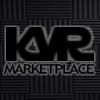
Find Fab Four, Gypsy, Ministry of Rock 1 and Voices Of Passion in the KVR Marketplace


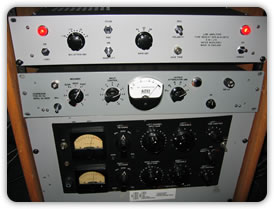
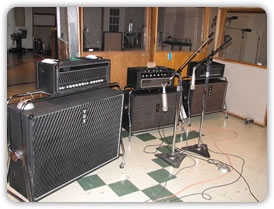
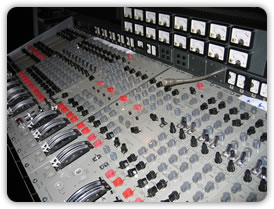

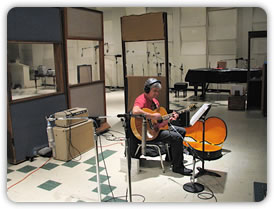
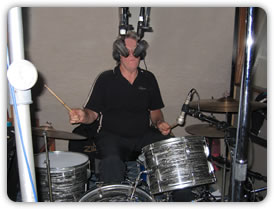


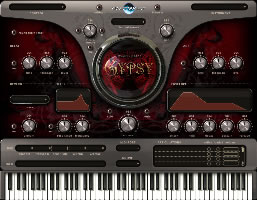
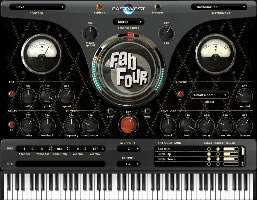
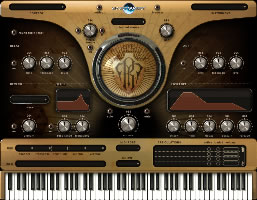
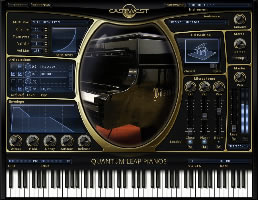
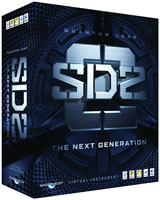
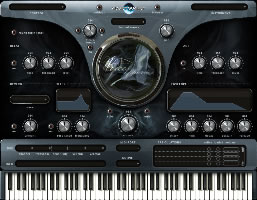


 Other Related News
Other Related News

